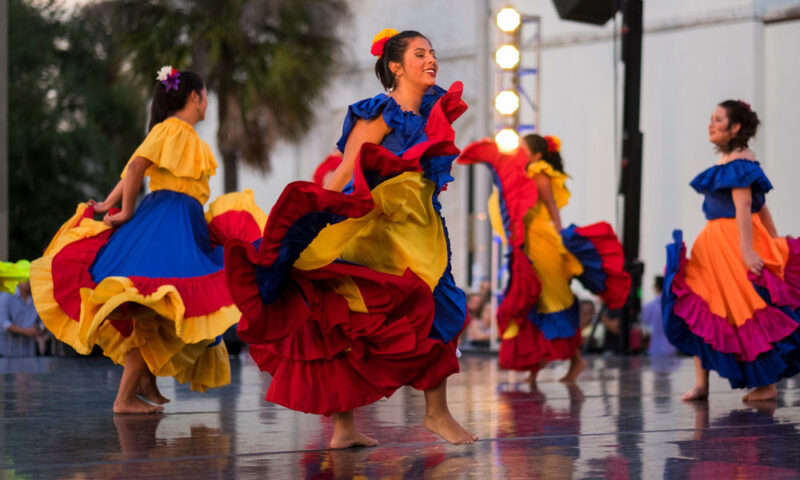
Celebrating Diversity at Your Next Event
Learn how to make sure your chosen event destination is a haven for diversity and inclusion.
At the heart of every association is a sense of community coordination—a group coming together to produce positive results.
Association meeting planners often strategize their events to build an inherent sense of belonging—however, a lack of a focus on diversity and inclusion can leave attendees feeling out of place. Some would-be attendees may even feel unwelcome entirely.
Beyond just being the right thing to do, representation and inclusion of diverse communities can provide organizations with valuable insights, perspectives, and experiences.
Today’s association professionals need to make sure all the voices are heard and everyone feels welcome regardless of their identity and status. But how do you make sure that happens at your next event? To find out we turned to the experts in Orlando.
Celebrate All Cultures
There are many ways to incorporate diverse cultures into your event programming. One way includes visiting diverse cultural landmarks in your destination city, advises Casandra Matej, president & CEO, Visit Orlando.
A DMO or CVB in your chosen destination can help you identify areas that can add opportunities to include other cultures and educate your members on the experiences and perspectives these cultures bring to the table.
For example, just 30 minutes from Orlando’s tourism districts visitors can explore the historic town of Eatonville, Florida—one of the first self-governing African American communities in the U.S, said Matej.
The town honors the memory of beloved Black author Zora Neale Hurston with the Zora Neale Hurston National Museum of Fine Arts, aka The Hurston, and the annual ZORA! Festival.
In nearby Winter Park is the Hannibal Square Heritage Center, which Matej pointed out is a preservation museum that offers free cultural events and educational programs for all ages that explore the African American experience.
Founded in 1881, Hannibal Square was home to African Americans working for the South Florida Railroad and Winter Park’s wealthy families. On Oct. 12, 1887, it became the site of one of the country’s earliest Civil Rights marches.
Infused into the local DNA of Orlando, and Florida in general, is Hispanic and Latino culture. According to the U.S. Census Bureau residents who identify as Hispanic or Latino account for more than 25 percent of the population inside Orlando’s city limits.
In turn, Matej said the area is rich with cultural attractions, special events, and restaurants that celebrate Hispanic and Latino culture. These include more authentic Mexican, Columbian and Tex-Mex restaurants than you can count, some of which feature big name chefs like José Andrés (Jaleo and Pepe) and Wendy Lopez (Reyes Mezcaleria).
Roll Out the Welcome Mat
Key to attracting more attendees is fostering a sense of welcoming that will lead to valuable insights, perspectives, and experiences, Matej advised.
“When all attendees feel welcome regardless of their identity and status, your association will benefit,” Matej said. “This extends beyond race to gender, ethnicity, language, class, sexual orientation, ability, and religion.”
Matej says it’s important to showcase the inclusivity of your chosen destination and make sure that everyone feels welcome there.
For example, Orlando has been a pioneer in LGBTQ+ tourism dating back to the original Gay Days in 1991. It was also named the first-ever “City of the Year” by GayCities.com.
“Orlando was also named the most LGBTQ+-friendly travel destination in the U.S. for 2021 by ParkSleepFly.com.” Matej pointed out. “We are proud to host special celebrations throughout the year that are of special interest to the LGBTQ+ community.”
Make Things Accessible
Sometimes attendees may want to join your event but feel unable due to physical disabilities or restrictions.
Matej says it’s important to make sure your event is as accessible as possible by considering the needs of your potential attendees. Your planning process should also consider the destination location and in-venue accessibility.
For example, the Orange County Convention Center has wheelchair ramps, automatic doors, passenger elevators, and accessible restrooms for those who need them. Venues like the Orlando Museum of Art, Harry P. Leu Gardens, and the Orlando Science Center are wheelchair accessible and most offer assisted listening devices.
Going beyond simple accessibility features when you’re planning events and activities during a meeting, it’s also important to think about the types of in-person events you may be hosting, Matej said.
Will networking spaces include seating for attendees who aren’t able to stand for long periods of time? Are there accessible options for attendees who can’t participate in a strenuous outdoor activity?
Disability access at theme parks in the area can help to make sure that all of your attendees can take part in the entertainment and fun planned for an event in Orlando, Matej said.
Make sure your next event is a welcome place for diversity to flourish—learn more and start planning at OrlandoMeeting.com.
(Handout photo)





